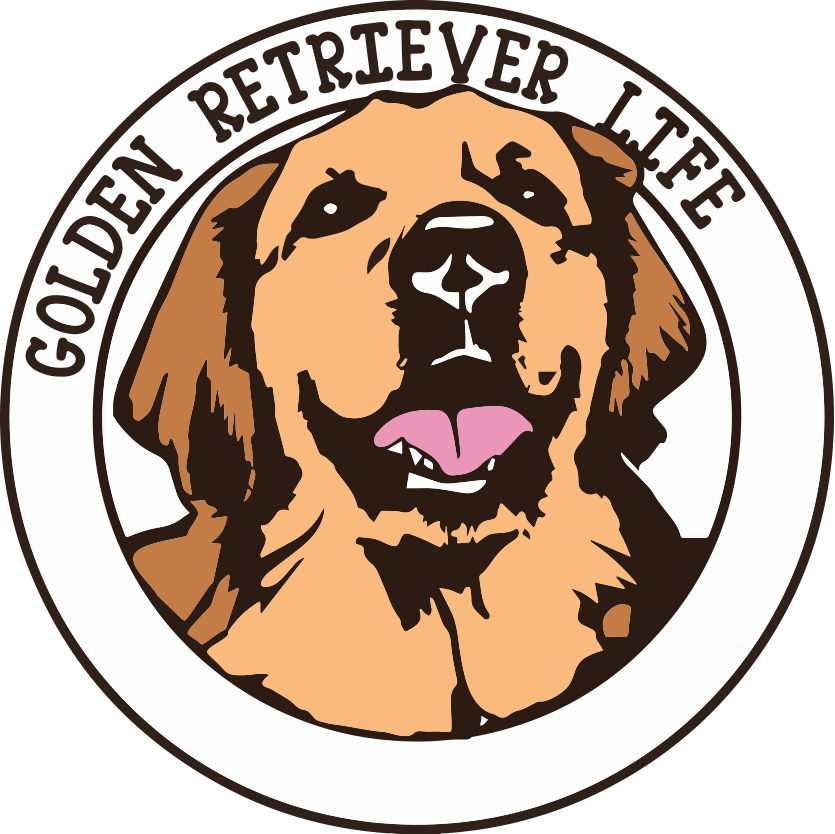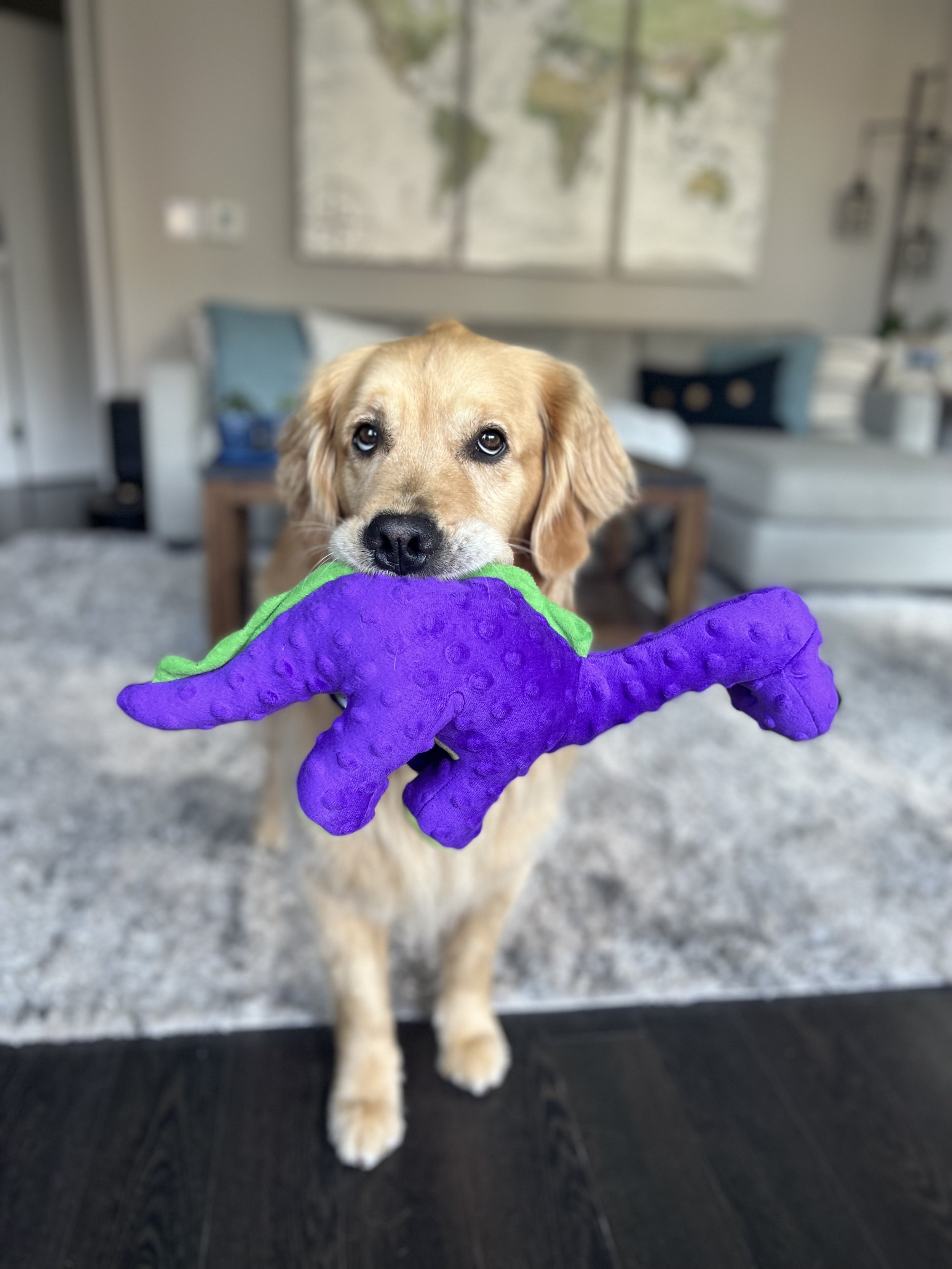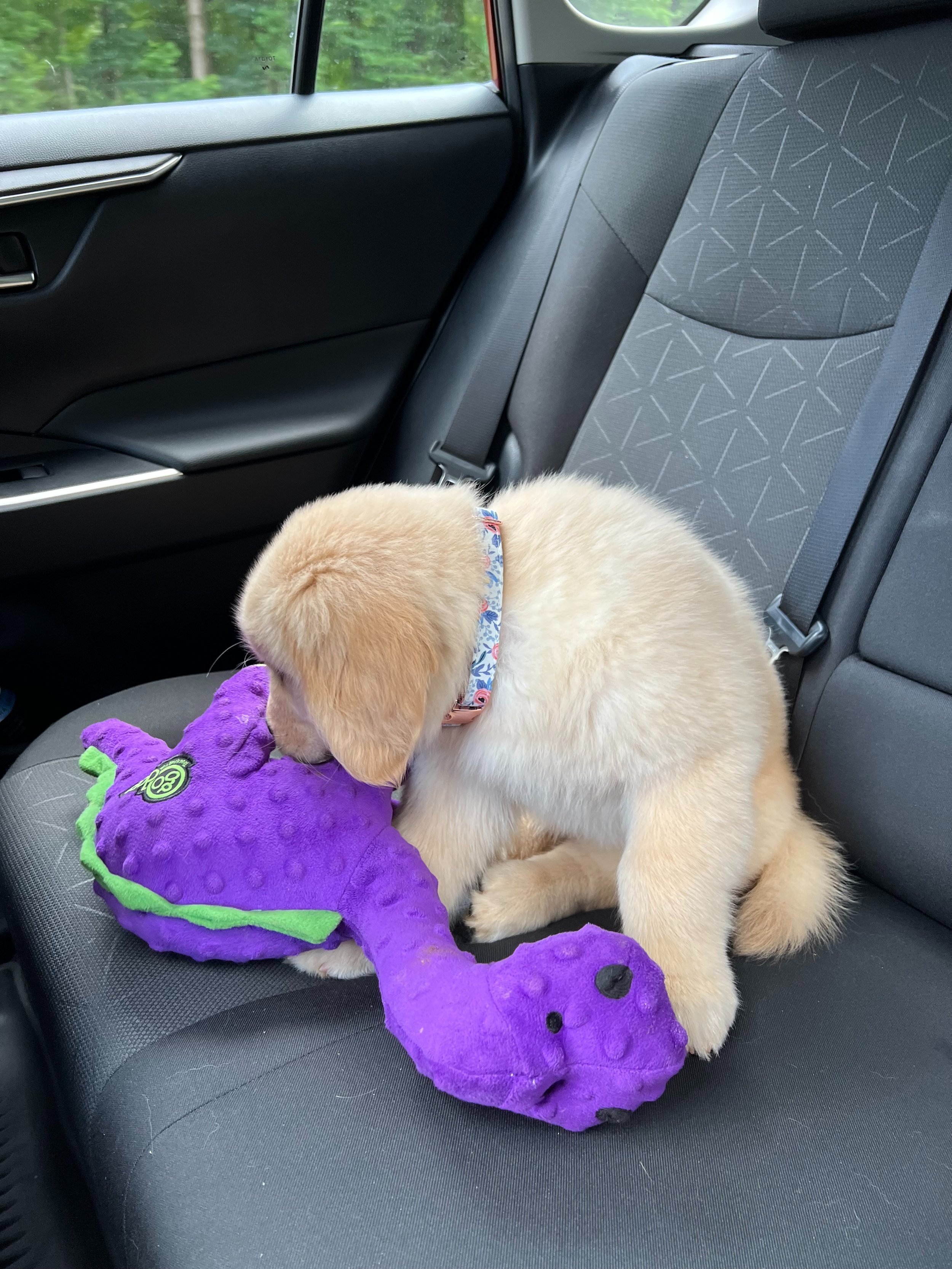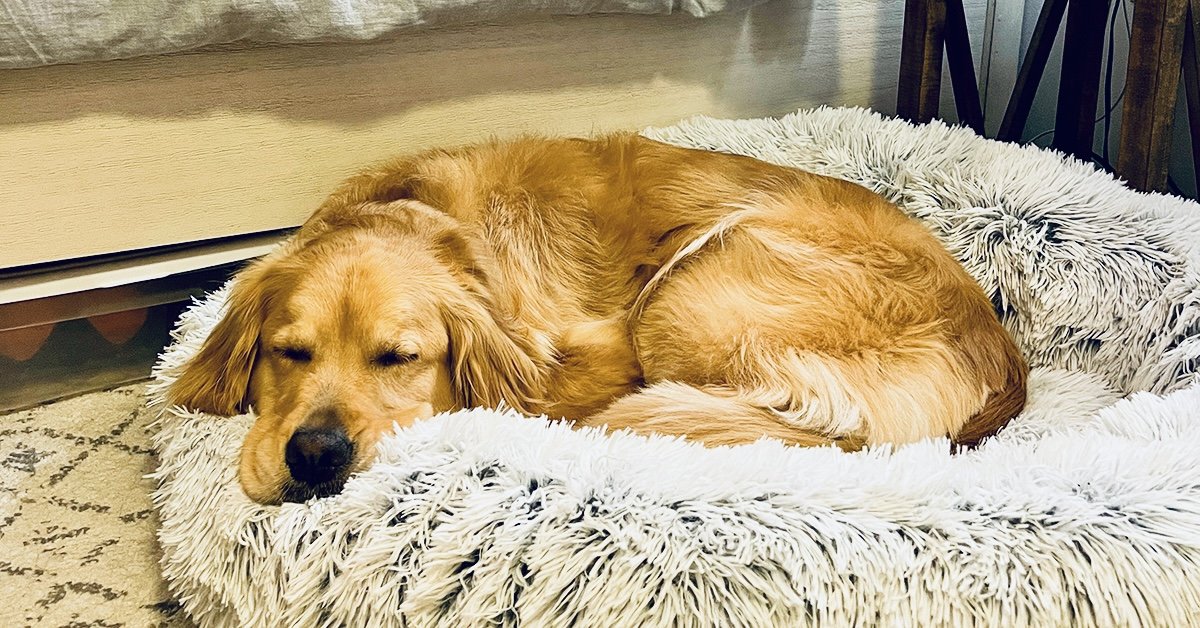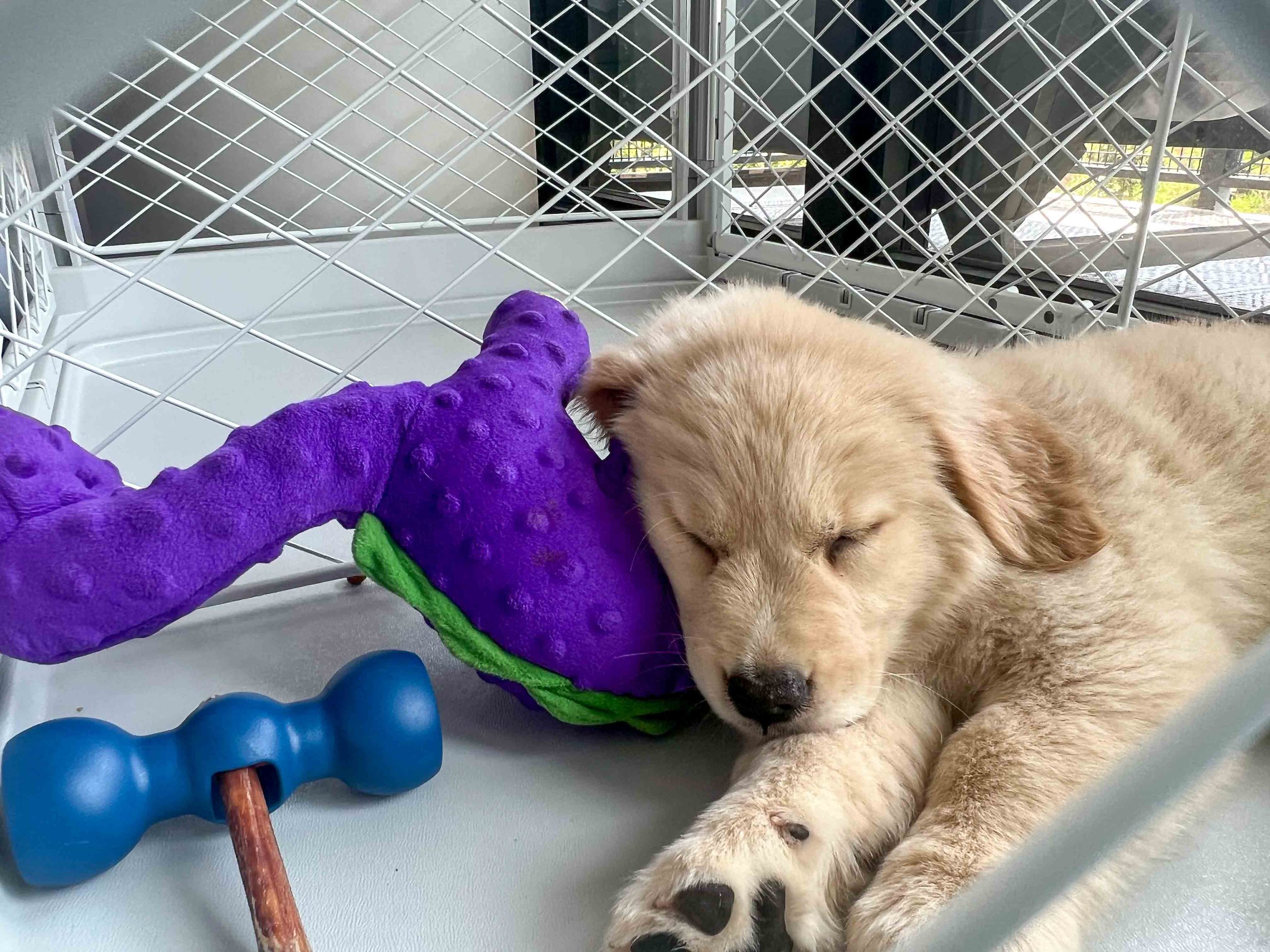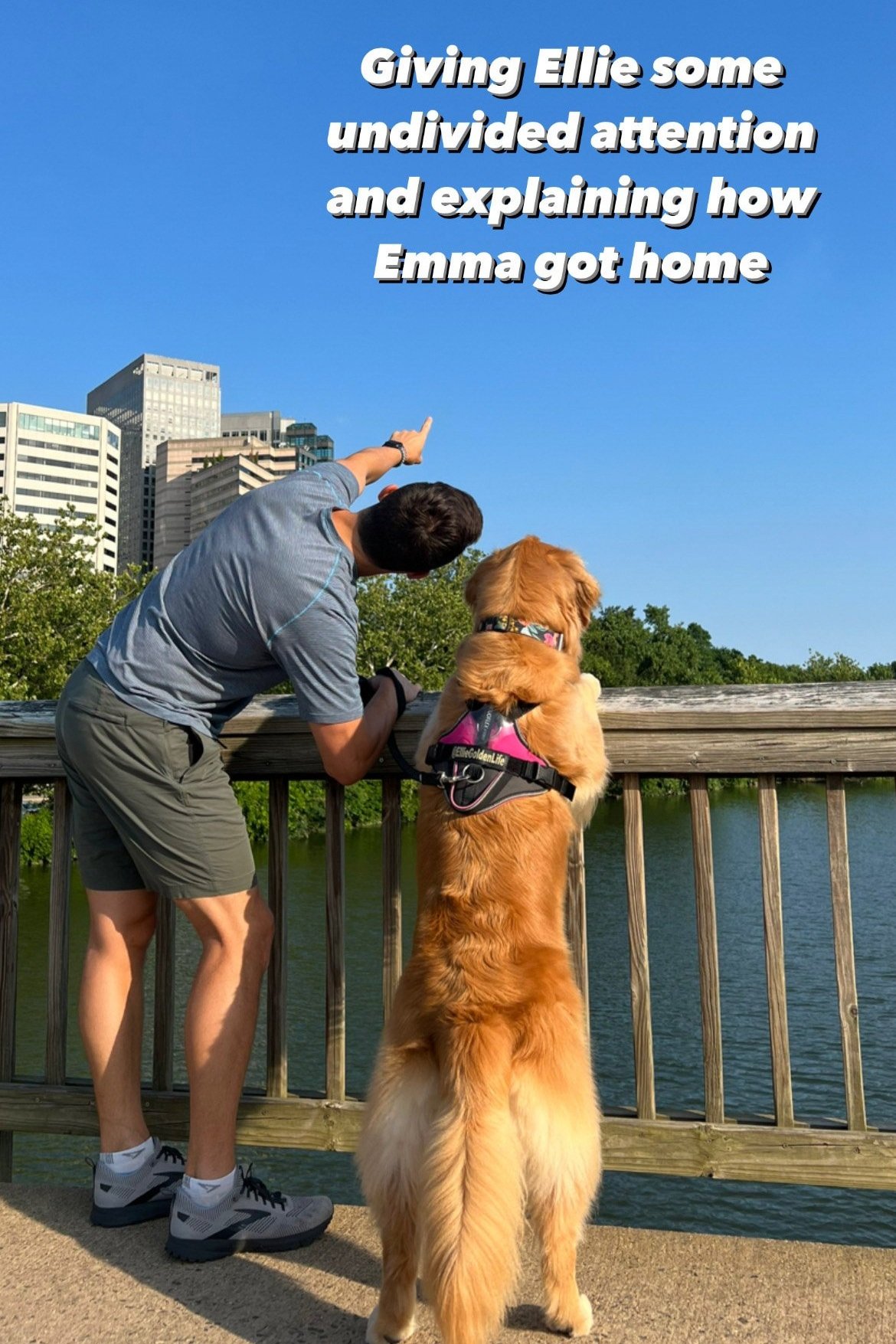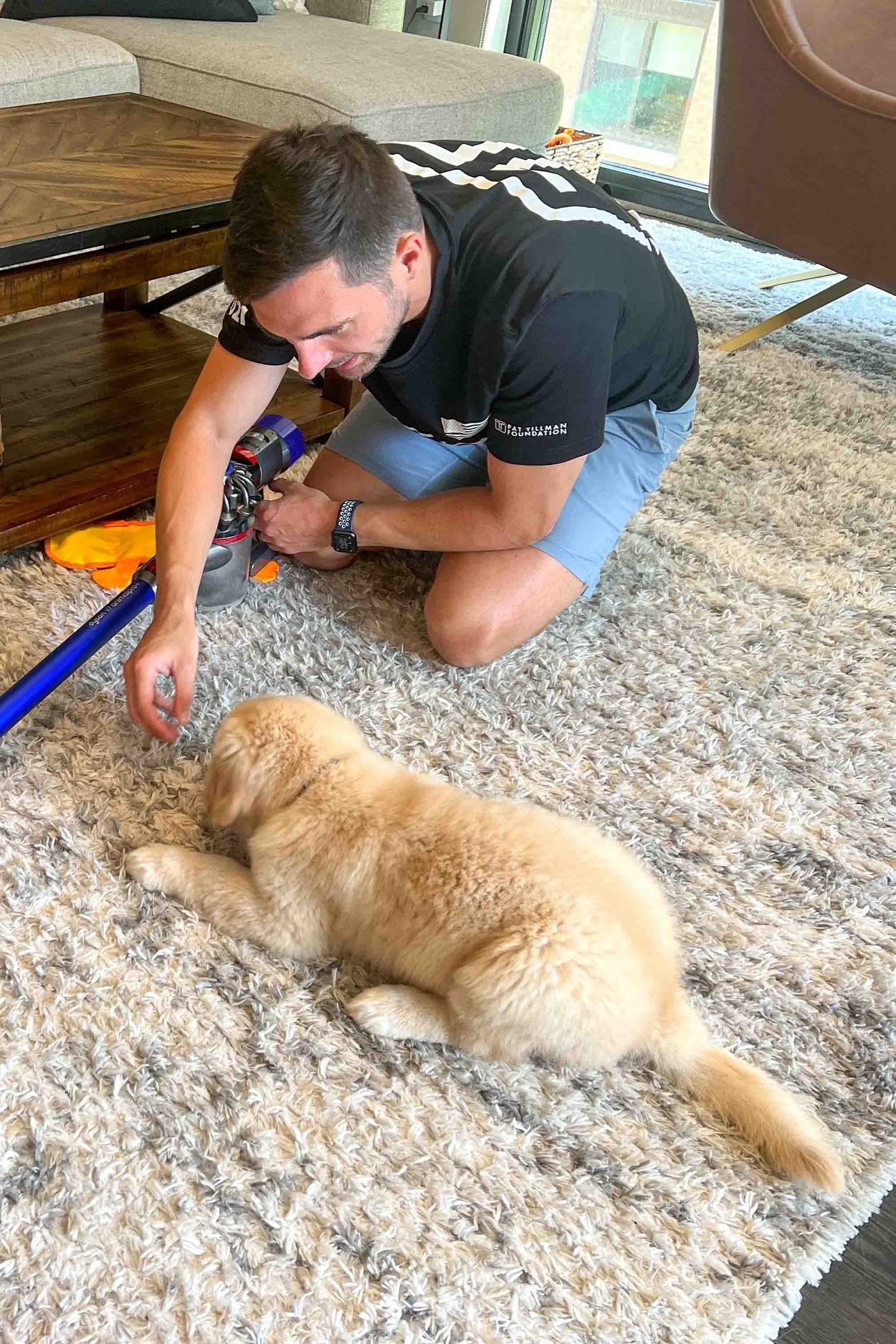How to Introduce a New Puppy to Your Dog: A 3-Phase Plan for a Smooth Transition
You may have spent a few weeks or even months preparing to bring a puppy home.
Your dog, on the other hand, by and large, has no idea what is about to happen!
In a perfect world, your adult dog and puppy would become best friends on day one, but that often isn’t the case.
Like many experiences involving puppies, it can and should take time. I recommend learning about the integration process and creating a plan to maximize success for a smooth transition.
We share our experience in this blog but if you have more questions or want to collaborate with other pet parents, we invite you to join our app, The Hapco. This link will give you FREE access.
My wife and I have a 6-year-old golden retriever (Ellie) and added an 8-week-old golden retriever puppy (Emma) to our family.
We made a plan and broke down the puppy-dog acclimation process into three phases:
1️⃣ Before Coming Home
2️⃣ The Initial Meet and Greet
3️⃣ The Following Weeks
1) Before Coming Home
Toy Exchange
We purchased two toys.
The first toy we let Ellie (6-year-old golden) play with for a few weeks. When we visited Emma (puppy), we gave her the toy.
Why do this?? This allows Emma to become familiar with the scents of Ellie and our home. Emma kept this toy, so it gathered the smells of her littermates and her mother. This toy accompanied her on the journey home and helped make the transition away from her littermates and mother a little easier.
The second toy we let Emma play with for 48 hours while we were visiting the litter of puppies. We brought this toy back to Ellie so she could become familiar with the scent before the new puppy's arrival.
Plan
➤ Where will the dogs meet?
➤ Do I have a space set up for each dog in my home?
➤ Can I expose each dog to the other’s scent?
➤ What is the vaccination status of each dog?
Education
It cannot be stated enough that having a plan for introducing two dogs can ease the transition and lead to easier days, weeks, and months ahead for all.
You’re not the first to become a multi-dog household, so there are plenty of tips and tricks to help. Kudos for reading this blog! We hope our story can be helpful for you.
We also created an app where all our training can be found in one convenient location on The Hapco Puppy Program.
The Hapco Puppy Program includes:
Before Getting Your Puppy. The most important things to do in order to prepare for this new addition to your family.
After Getting Your Puppy. A four-week program to build a solid training foundation.
Resources. Additional guides about our most asked topics, such as potty training, crate training, and puppy biting.
The best news, we offer all these training tips for FREE!
2) The Initial Meet and Greet
Ideally, dogs should meet in a neutral space to minimize any territorial anxiety or aggression.
I found this to be a challenge. We live in an urban environment and Emma was not fully vaccinated for another 6 weeks.
Everyone will have a slightly different story based on your dog's age/temperament, the layout of your house, and maybe even the logistics of when your puppy comes home.
Watch Ellie’s reaction to meeting her new puppy sister, Emma. 🥰
Our Story
My wife and I picked up Emma and flew back home the same day. We let Ellie stay home with a dogsitter to enjoy a day of peace and quiet (the calm before the storm).
We arrived home with Emma in the evening.
Ellie and Emma met outside. I held Emma in my arms and let Ellie come and go as she pleased.
When we went inside, Emma was already in the house. From our research, we learned resident dogs should enter the house and find the new dog already there.
Dividers inside our apartment allow Emma and Ellie to each have their own space, observe each other, and sniff/explore each other through the gates.
3) The Following Days
Do not rush.
The key is to continue to give each dog its own safe place. We kept the gates up in our house to separate Ellie and Emma from time to time during the first few days.
Set up separate, private spaces for each dog. For example, Ellie still slept on her bed in our room or next to us in the office. Emma had her crate and was often accompanied by a stuffed chew toy to keep her happy and occupied.
Individualized attention
Keep up your normal routine with your older dog, such as their mealtime, walks, and playtime. Spend time working with each dog separately.
Play together
We focused on keeping Ellie and Emma’s playtime a fun and positive experience.
Offer each dog a different stuffed toy they can chew when they’re by each other. It’s best to have some space between the two dogs.
What is normal puppy play?
Tail wagging
Parallel levels
Bouncing, playful movements
Licking the mouth and face of the other dog
Rolling on the back (in dog language this signals submission)
“Play bow,” in which the tail end goes up, and the head goes down.
It’s okay to let your adult dog lightly growl. (If you are correcting them by saying “shhh be nice” then the dog may learn that every time they interact with the puppy they get in trouble).
Play separate
Bring your dog to a puppy socialization class as early as eight weeks to allow them to exhaust their energy with other puppies. This will relieve your adult dog from some of the puppy play and increase the foundation for positive interactions.
We brought Emma home on a Saturday and took her to puppy class on Monday.
Note: I don’t recommend you take your dog to a dog park for this as there is a risk of Parvo. Looks for an organization that sanitizes the play location and requires all puppies have at least their first round of vaccinations.
Play referee
Be present and observe 100% of your dog’s playtime to keep it safe and happy. Play sessions can be in short durations (5-10 minutes).
Older dogs will naturally give your puppy some corrections, and this is great for training manners. However, puppies can be like the Energizer bunny and can be more playful than your adult dog. They have not learned bite inhibition yet, and their razor-sharp shark teeth are as unpleasant to your adult dog as they are to you.
Ellie likes her personal space, so watched her closely for times when she appeared overstimulated by mouthing and jumping.
Behaviors to monitor and unacceptable play?
Signs of tension, aggression, or fear
Behaviors such as growling, snarling, snapping, charging, or biting
Stiff body movements instead of bouncy
Curled lip, low warning growl
Ears pinned back
Tucked tail
One dog trying to jet away instead of taking turns
You'll want to intervene and redirect if you see any of these signs. Do not pull them apart by the leash. Instead, quietly step in, separate the dogs, and distract them with a chew toy. This reassures the older dog they do not have to do it all on their own and that you will step in to rescue and support them.
Be mindful of food, treats, and toys
Continue to manage the environment to maximize the success of positive interaction. Pick up and remove anything your dog may be territorial over, which reduces resource guarding, when a dog reacts when they perceive a threat to a valuable resource in their possession.
Feed each dog separately.
We dream of our puppies being best friends, but we don’t want to skip the initial steps of planning and laying a solid foundation that will lead to this adorable friendship.
You may also be interested in…
